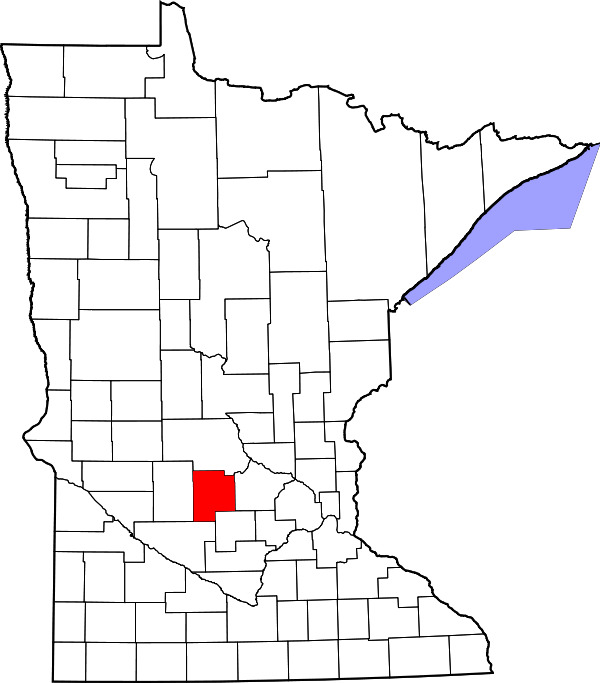Swede Grove (MN) townshipÖversikt
Swede Grove Township i Meeker county i Minnesota i USA
Arkiv:
HistorikSwede Grove Township was first settled in 1857 by N. E. Hanson, Nels Elofson, Hans Peterson, Peter E. Lund, Nels Weylander, Andrew Petersonk, and John Rosencranz. There were a few others with their families. The township was named by N. E. Hanson and Nels Elofson because it was settled by Swedes and there was a nice grove of trees nearby. Nels was the second white man in Meeker County. The township, originally a part of Acton Township, was organized on March 15, 1868. Nels Elofson was appointed postmaster in 1859. The same day as the Indian attack in Acton in 1862, a meeting of some of the settlers was being held at Nels Elofson's house in Swede Grove in the morning. The purpose of the meeting was not about the Indians, as they hadn't heard about the massacre yet. The purpose was to find three men to go off into service in the Union Army. Swede Grove Township was required to fill the draft quota made on it by the government. At about ten o'clock in the morning, Nel's neighbor Ole Monson's children came running in the house and informed their father, and the other settlers at the meeting, that some Indians were in the area. The children were frightened and wanted to stay at the house. Monson and Swan Nelson went to see what the trouble was. Along the way, they met some Indians on horseback. One of the Indians reached down from his horse, grabbed Nelson by his whiskers, and pointed to the east. Swan didn't understand what the Indian was trying to tell him. They parted company peacefully. The Indians stopped at Elofson's place. Nels knew several of them. They told Nels that they were on their way to the “Big Woods” for the purpose of killing some Chippewas who, they said, had been killing the whites, then rode off. Before long, news of the murders of the Jones and Baker families in Acton got to Nels and, in the evening, he and Nels Hanson went to the scene of the murders where others had also gathered. There they learned the details of the attack and were told to come back the next morning to help bury the dead, which they did. While they were there, nine Indians came in sight and several shots were exchanged, but no one was hurt. Elofson returned to his home and helped to get up his and all the neighboring families to go to Ripley (now Litchfield). When the settlers returned to their homes later, they found that the Sioux had burned down most of the houses, except for a couple. The couple not burned down were the homes of men who had been friendly with the Indians, like Nels, and even had troubled to learn their language. Their homes had been “protected” by a yellow feather on a post marking it. On September 1, 1862, seventeen men and some others started for Green Lake on the word there was a family on an island there. But Green Lake has no islands. They were turned back at Swede Grove, however, after a skirmish with the Indians. Two Indians were killed and a soldier named Samuel B. Hutchins, from Kingston, was hit in the thigh with a musket ball. On their way away from the skirmish, Ovid B. Todd was injured when someone's gun accidentally discharged. Övrigt |
Plats |
Användarverktyg
plats:us:swede-grove.mn.ts
plats/us/swede-grove.mn.ts.txt · Senast uppdaterad: 2024/04/03 01:27 av 127.0.0.1
